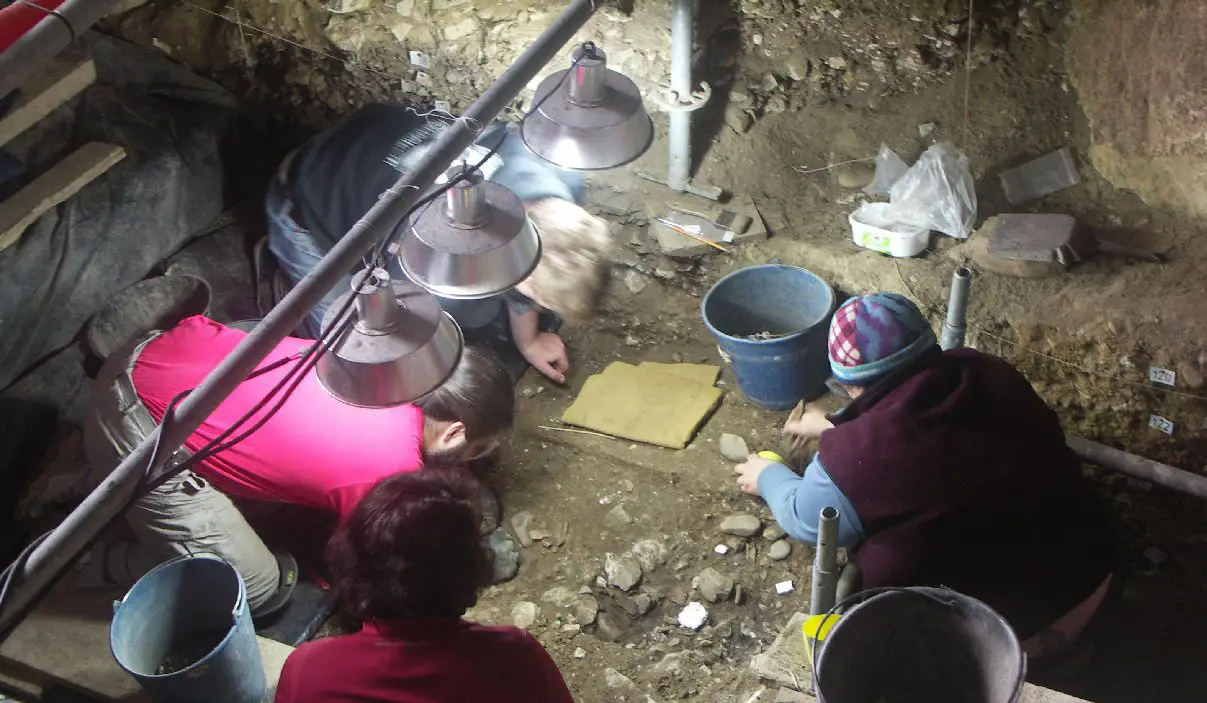A study of a partition made from rocks in the El Mirón Cave has led to archaeologists identifying it as a Palaeolithic bone tool workshop.
El Mirón Cave is a cave system in the upper Asón River valley, located in the Cantabria region of northern Spain.
The cave was first discovered in 1903, leading to a series of excavations over the century revealing evidence of Palaeolithic hunter-gatherer activity, and the discovery of the “Red Lady of El Mirón”, a skeleton from the Upper Palaeolithic which was found coated with ochre, a red iron-based pigment.
In a paper published in the journal Antiquity, researchers from the University of New Mexico (UNM) have suggested that a partition made from rocks in the rear of the cave was actually used for bone tool manufacturing around 20,000-years-ago.
The cave contains hearths, pits, and other small structures, that provide evidence of Palaeolithic home-making, with the partition indicating that is was used for the working of animal bones and of stones to make tools based on the discarded bone material found around the rock feature.
Associate Professor of Archaeology at UNM, Emily Lena Jones, said: “Our hypothesis was that if this feature was used by the inhabitants, the discard around it should show clear patterning. Our analysis showed that this was the case. The stone alignment does seem to have been used in some way, and probably not just to isolate a trash heap.
It seems more likely that it is associated with a bone-working area. While probably most of the bones were from animals that initially did provide food for people, by the time the bone fragments were discarded in Level 115 of the cave, they’d also have been broken in ways that suggest people were making tools out of them,” added Jones.
According to the researchers, this discovery adds to the small list of known examples of Palaeolithic hunter-gatherer structures in caves, which are often associated with religious or ceremonial activities, but the area in El Mirón looks like it demarcates a working area for a bone tool workshop.
https://doi.org/10.15184/aqy.2023.9
Header Image Credit : Antiquity







